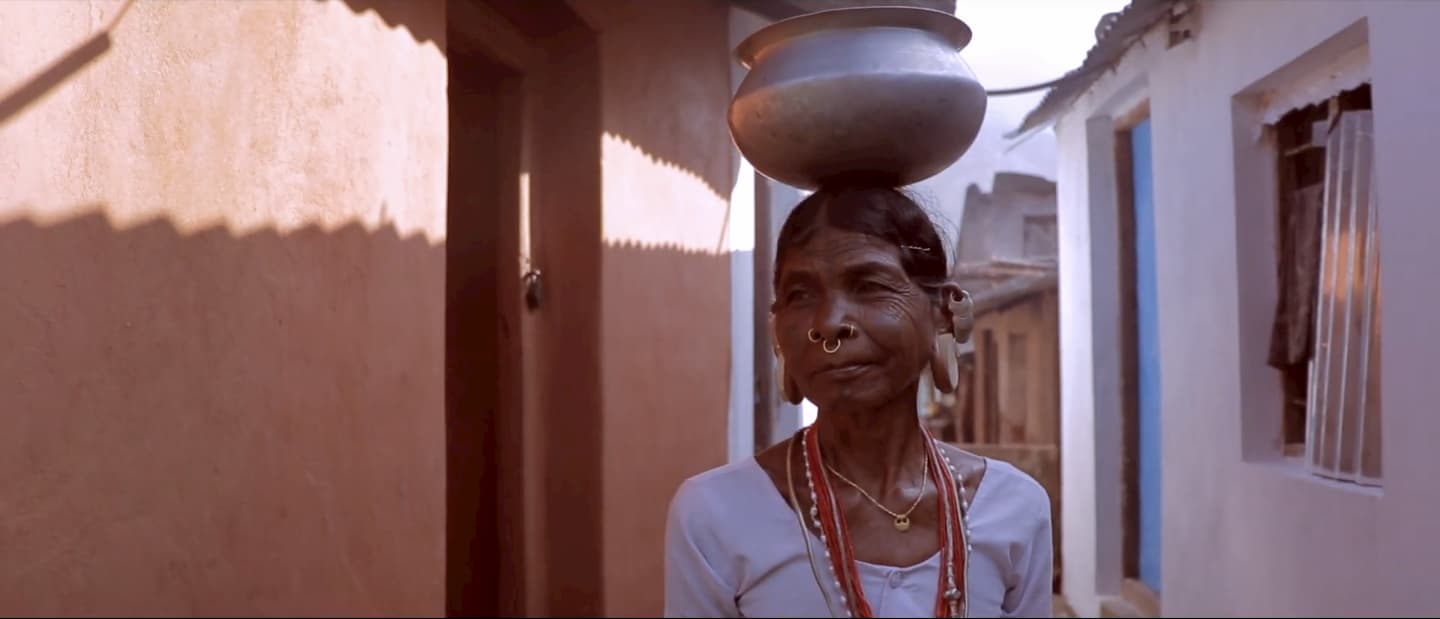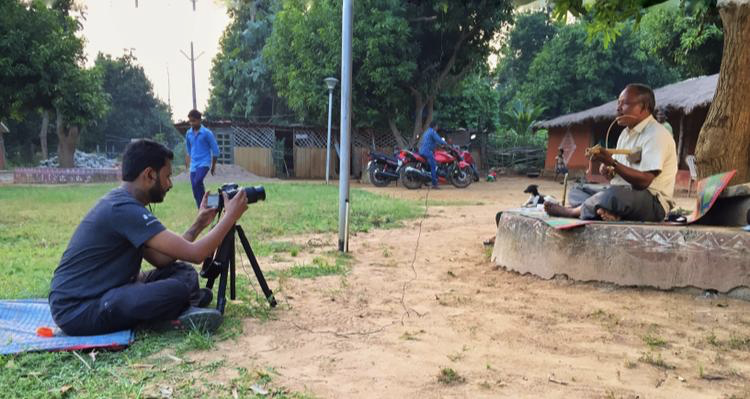
This is the second field diary entry from Subhashish, one of our Digital Identity Fellows. His year-long research project is focused on the challenges and opportunities within marginalised groups most affected by Aadhaar, India’s national digital ID system.
***
India’s ambitious biometric-based identity — Unique Identity (UID) — has been the focus of the State of Aadhaar report recently published by Dalberg Global Development Advisors, a global consulting firm. The study — made possible with funding from Omidyar Network — includes a sample size of 167,000 Indian residents and sheds some light on many facets of Aadhaar. While the report has provided Aadhaar’s creators with a chest-thumping moment, I have attempted to explore other perspectives shared with me — beyond the statistics — by a few of the most marginalized communities in the country, and other subject matter experts.
UID is used to tag Indian citizens with a unique number called Aadhaar by centralizing a range of personal data (including biometric). Contrary to popular misconception that Aadhaar is yet another “card” that provides the Indian citizens a form of identity, it is merely a number. In this, my latest field diary entry, I talk about exclusions that are tied to Aadhaar’s design and implementation.
After publishing the first field diary of my fellowship, I went on to interview 20 individuals in the Indian states of Odisha and Uttarakhand in four different locations. 5 (33%) of the interviewees were women and 2 of those women are illiterate, whereas the male interviewees were all literate. The interviewees represent a range of social and economic groups. I also interviewed some of the key stakeholders including human rights lawyers and activists, litigators, ethnographers, and academic and other researchers.
Aadhaar in its current form is being linked to several citizen beneficiary services. Linking services to a unique number so that service providers can authenticate a beneficiary has been one of my focus areas since the beginning of the project. In practice, authorities are mostly using fingerprint scanning-based identification and authentication. Services like state pension or rations (food, fuels and so on) — or even subsidized healthcare — are received by individuals who are generally marginalized by a range of different factors. These might include age, literacy, access to public information in one’s own language, retention of fingerprint due to illness or manual labor, or periodic update of biometrics to reflect any change of the same because of physical work. These are just some examples of factors driving exclusion during Aadhaar’s implementation. I am looking at a few of these factors in my research.
Unique, Ubiquitous and Universal
One of the experts I met was Dr. Usha Ramanathan, an independent researcher and human rights lawyer, who was invited to provide inputs on Aadhaar’s early design in 2009. Nandan Nilekeni was a key person helping shape the Indian government-operated Unique Identification Authority of India (UIDAI), the organization behind the development and implementation of Aadhaar. Nilekeni emphasised the three main pillars of Aadhaar — Unique, Ubiquitous and Universal. Dr. Ramanathan was early to realize that Aadhaar is not what it was designed for — she found out that the “Unique” part was not to provide a unique identity to every citizen by providing them with a unique number but a tool for the authorities for identification. Secondly, she also noticed that the “Ubiquitous” part of the design was to link the records of every single resident of India across multiple other databases using a unique number — Aadhaar. Criticizing such database-linking, Rahul Narayan, a lawyer in the Indian Supreme Court, told me that such a design has a striking and dangerous similarity to what anarchists like Stalin or Hitler did. Different departments like the police (law enforcement) and R.T.O. (Road Transfer Office) and private/public services (such as banking) are all being combined using Aadhaar.
Dr. Ramanathan also looks at the “Universal” aspect of Aadhaar as an inherent design feature that makes every person feel compelled to enrol for Aadhaar, even though enrollment is marketed as voluntary. She went on to point out that, “It was clear from the beginning that the people who would suffer the most are the poor. As an untested technology that is being imposed on people, the whole project was shot from the shoulders of the poor without knowing if such an ID would work or not. Aadhaar is not a card but a number attached to a biometric. If the biometric doesn’t work, the number doesn’t work.”

Subhashish recording a traditional Jurai Sora music performance by Srinivas Gamango in Gajapati district, Odisha, India. Picture by Ranjan Raika
Access to information
I interviewed two indigenous communities — the Jurai Soras and the Lanjia Soras —both related to each other ethnically and socio-culturally, and both marginalized for similar reasons. Ramani, a 70-year-old Jurai Sora lady from the Rayagada district of Odisha recounted how, along with many of her fellow villagers, a lack of literacy made it difficult for her to enroll. It took a year for Manjula, a Lanjia Sora homemaker from the Gajapati district of Odisha who is in her early forties, to get her Aadhaar. In separate accounts, both Ramani and Manjula shared how access to information can be challenging, particularly given that monolingual speakers need to rely on the officials or other community members to help translate across languages. Ramani is monolingual and speaks the Lanjia dialect of the Sora language (an oral language largely), whereas Manjula speaks the Jurai dialect of the same language. Government officials are generally native speakers of Odia, the official language of the Indian state of Odisha.
Dinabandhu, an elderly male Jurai Sora speaker also detailed how important public announcements are made by the Endia, a bilingual person who acts as a messenger of the government. India has a 74.8% literacy rate with more than 700 languages spoken across a country where only 22 are officially recognized. Only about 12 are used in the official implementation of Aadhaar. The State of Aadhaar report, however, claims that 92 percent of people (who were part of their study) are satisfied with Aadhaar and 90 percent of Aadhaar holders trust that their data is safe in the Aadhaar system. It is highly unlikely that someone whose language is not understood by the state, or someone who is illiterate, would express the same level of satisfaction with Aadhaar, or trust in the safety of their personal data in Aadhaar, or even understand the complexity of the security of personal data in the first place.
The real costs of exclusion
I interviewed a researcher (who did not want to be named) and asked about the technical and social perspectives of Aadhaar. The researcher had worked in rural Karnataka, Andhra Pradesh and Telangana — all neighboring states in South India — studying the receipt of public benefits such as pensions and PDS (Public Distribution System, a federal government initiative to provide food and essential commodities to people in need with the objective of eradicating poverty). According to the researcher, for someone already part of a public system and already receiving their benefits, the complexity of getting everything connected through Aadhaar becomes burdensome. People who do manual labor, or have an illness, or are in old age (or any of these combinations) often find their fingerprints are not detected or authenticated. The researcher, along with Dr. Ramanathan and Narayan, all emphasised in separate accounts the fact that authentication using a mobile number or biometric (it has to be either in the case of Aadhaar) has many flaws.
Dr. Ramanathan also emphasised that many people who struggle to maintain a valid mobile number in their name over time – or gave the phone number of whoever was available at the time of enrollment, and subsequently failed to update the number – always found themselves excluded. The rate of exclusion is extremely high and extremely common for such individuals. She calls those who designed Aadhaar ‘techno-utopians’, a group of tech-savvy individuals who, because of their own access to technology and other privileges – and lack of understanding of the on-the-ground reality – fail to understand the difficulties that common people in the country often face.
Shyam Divan, a noted litigator, added that many people from rural India have been denied their rations because they could not verify their identity using the most-used biometric authentication – their fingerprint. He calls such a system ‘dehumanizing’. By November 2018, Right to Food Campaign activists in the Indian state of Jharkhand reported that 17 people had died in Jharkhand alone because of their failure to link their ration cards to Aadhaar – even though the State of Aadhaar report states that 80% people feel that “Aadhaar has made PDS rations, MGNREGS, or social pensions more reliable”. It is important to note that the failure, however small it might look in percentage terms, is massive in reality when you consider there are 1.3 billion people in India.
Citizenship, religion and biometrics
India has experienced huge social and political turmoil because of a recent new amendment – Citizenship Amendment Act (CAA/CAB). The amendment to the 1955 Citizen Act of the Indian Constitution now allows six religious communities (of Hindu, Sikh, Buddhist, Jain, Parsi and Christian faiths) fleeing persecution in Afghanistan, Bangladesh and Pakistan to legally become citizens of India. Evidently, the Act does not include Muslims (particularly the Ahmadiyyas and Sufis of Pakistan and Bangladesh), Tamils from Sri Lanka, Gorkhas from Nepal and many indigenous communities of other faiths. India’s Home Minister, Amit Shah, has periodically said that by linking with the National Register of Citizens (NRC) – a national register that separates citizens from “intruders” (translation of a Hindi-language word that the Minister often uses to describe refugees) – India will help legalize the citizenship of Hindus along with the other five religious communities from three countries while indirectly hinting about excluding Muslims. Interestingly, the NRC is based on the National Population Register (NPR) which was created in 2010 to list all the residents (citizens and non-citizens) living in India, which expanded after linking biometric data from the Aadhaar database. Dr. Ramanathan, Narayan and many other critiques of Aadhaar find the linking of Aadhaar with other databases extremely dangerous and a way forward to establishing mass surveillance, a fear that was raised against the Aadhaar Act 2016 by the then Member of Parliament, Tathagata Satpathy.
Despite huge efforts to make Aadhaar the go-to ID verification for many public and private services, Section 9 of the Aadhaar Act 2016 – which talks about the authentication being used as a proof of citizenship and domicile – was called “unconstitutional” in an Indian Supreme Court verdict. Many communities during my interviews were happy to have an Aadhaar ‘card’ to themselves as an entitlement, and they now failed to imagine their lives without one.
If you have a question for Subhashish or are interested in his research, you can reach him here. To follow his whole research project, you can find an archive of his monthly field diary entries here.
